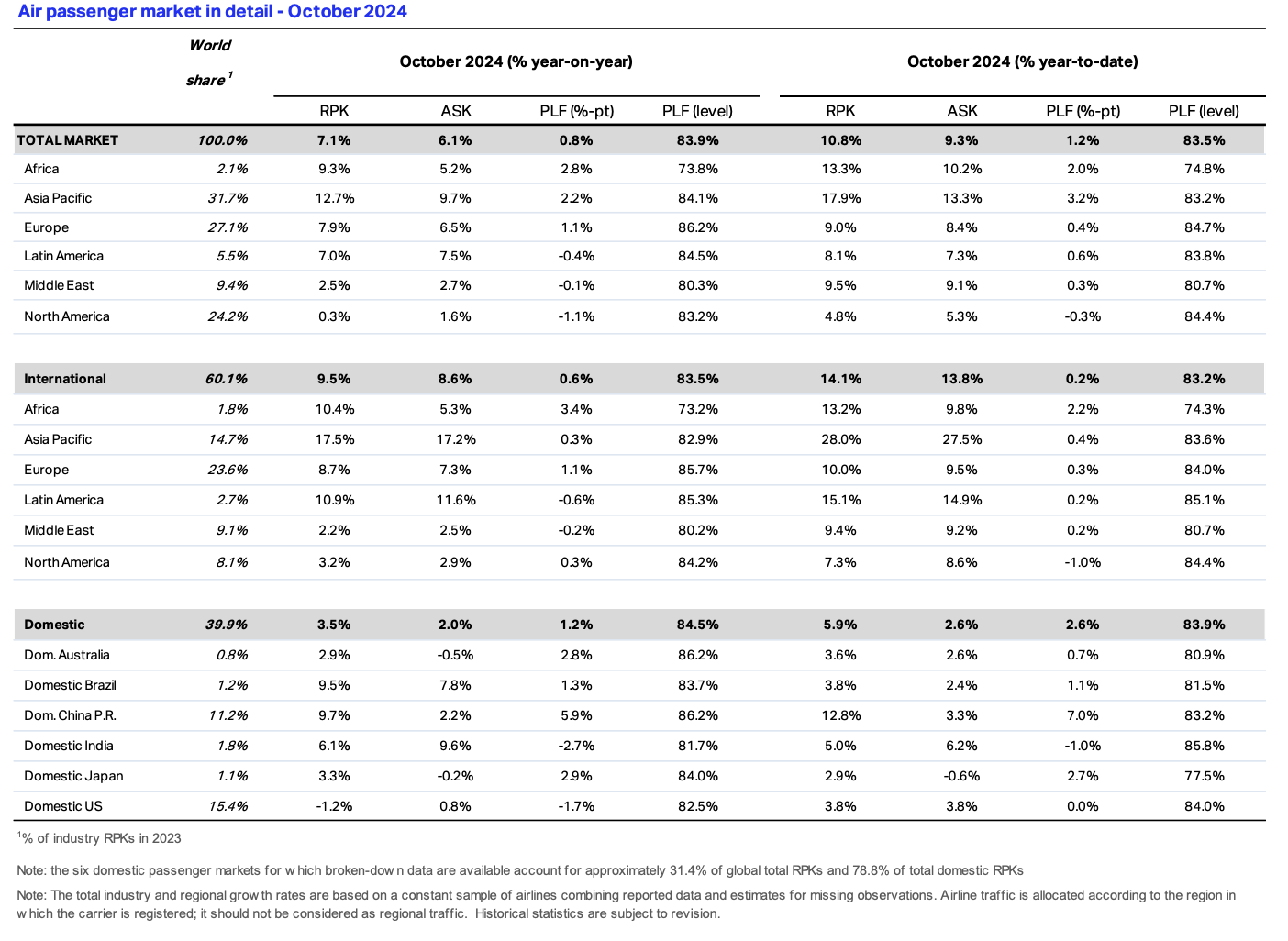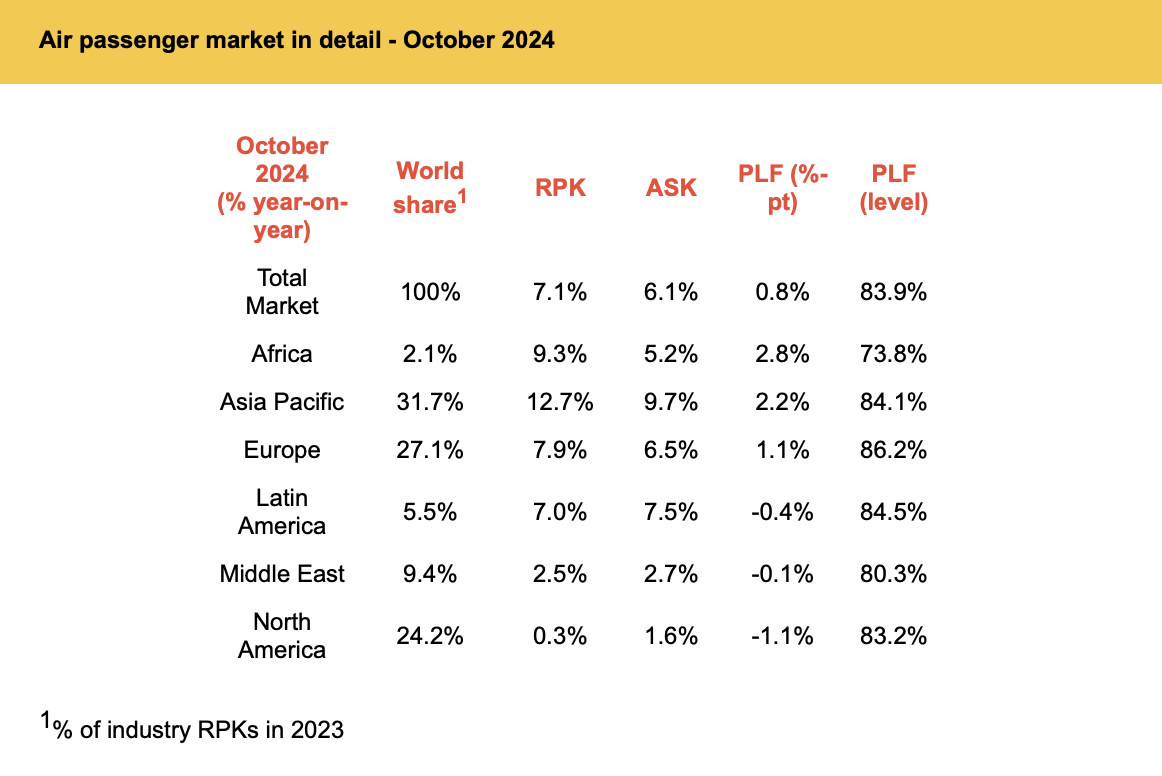 The International Air Transport Association (IATA) has reported encouraging growth in global passenger demand for October 2024, reflecting continued recovery across both international and domestic travel markets.
The International Air Transport Association (IATA) has reported encouraging growth in global passenger demand for October 2024, reflecting continued recovery across both international and domestic travel markets.
Total demand, measured in revenue passenger kilometres (RPKs), rose +7.1% year-on-year (YoY), while total capacity, measured in available seat kilometres, increased +6.1%.
In October, the global passenger load factor reached 83.9%, a +0.8 percentage point rise compared to October 2023.


International passenger markets breakdown
International passenger demand for October grew +9.5% YoY, led by Asia Pacific and Latin America. Capacity rose +8.6% YoY with the load factor increasing to 83.5% (+0.6 percentage points compared to October 2023).
All regions showed growth for international passenger markets with Europe having the highest load factors and Africa showing the highest increase. The Americas and Middle East saw decreases.
Asia Pacific airlines led the recovery with a +17.5% surge in demand, supported by a +17.2% rise in capacity and a load factor of 82.9% (+0.3 percentage points). This was driven by the recovery of China’s domestic and regional travel markets.

Meanwhile, Latin American airlines experienced a +10.9% rise in demand with capacity climbing +11.6% YoY. This was offset slightly by a 0.6 percentage point decline in load factor to 85.3%.
European carriers also performed strongly, recording an +8.7% increase in demand and a +7.3% rise in capacity. The region maintained the highest load factor globally at 85.7% (+1.1 percentage points compared to October 2023). This is due to high demand within the intra-European market.
African airlines posted a +10.4% increase in demand, driven by a +5.3% YoY rise in capacity and a significant +3.4 percentage point increase in load factor, reaching 73.2%.
Growth in the Middle East and North America was more subdued. Middle Eastern carriers saw a +2.2% rise in demand with a load factor of 80.2% (-0.2 percentage points), while North American carriers posted a +3.2% increase in demand and +2.9% capacity increase, with a load factor of 84.2% (+0.3 percentage points).
Domestic markets deliver mixed results

Domestic passenger demand rose +3.5% YoY, with capacity increasing +2.0% and the load factor reaching 84.5% (+1.2 percentage points).
Domestic RPK in China rose +9.7%, driven by strong demand and an increased use of wide-body aircraft. Other key domestic markets, such as Japan, Brazil and Australia, showed steady growth, while the USA recorded a slight contraction in demand, with RPK falling -1.2% YoY.
IATA Director General Willie Walsh commented: “Continued strong and stable demand is good news, but just as important is the steady improvement in load factors. It shows what a great job the industry is doing in flying people more efficiently.
“Average seat factors have risen from around 67% in the 1990s to over 83% today. Politicians thinking of trying to tax passengers off planes to reduce emissions would do well to note this. Even if fewer people fly because taxes make it too expensive, it doesn’t automatically mean reduced emissions because the planes will still fly, just with fewer passengers. That would reverse decades hard won progress.
“We need to see the planes full to generate the economic and social benefits of travel with the most minimal emissions possible.” ✈











